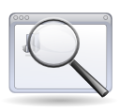MOSEP foundation module/session 6
![]() Digg this
Digg this
![]() Post to del.icio.us
Post to del.icio.us
![]() Post to Furl
Post to Furl
![]() Post to Magnolia
Post to Magnolia
![]() Post to Yahoo
Post to Yahoo
 |
More self-esteem with my e-portfolio: Foundation Module Discovering the power of e-portfolio |
|
|
The objectives of this session are that participants will be able to:
|
representing what has been learned during the Foundation module - presentation of main ideas concerning creation of ePortfolio. The learner has to identify components of a presentational / showcase portfolio for his end of module presentation. |
Introduction to Validation Process
Validating is the processes of proving – to oneself and to others – learning has taken place – including the abilities and competences identified and recorded. Validation takes place through evidencing and verification. Evidence is provided by the learner to attest to their own achievement and may be in different forms and media - for instance a picture of a chair they have made or the URL of a web site they have designed. Verification is externally sourced evidence of claimed achievement - for example a letter from a team leader verifying as to performance during a work placement. Validation is not the same as assessing and accrediting.
Validation is referenced against the abilities and competences identified by the learner – not those of an external occupational profile or qualification presenting offers an opportunity to select artifacts from the portfolio to tell a story or make a point. Presentation involves the processes of structuring, visualizing, narrating and re-purposing. Presenting is the bridge between validation and assessment but it is only one of the possible purposes of presentation.
Goals of this training session:
- Validate the module: Proving that the learning has taken place. This may be formal with tutor feedback and transcript or informal through self-assessment/peer feedback/a link to a product (artefact/asset) that demonstrates that the learning has taken place.
- Plan future learning: Planning is a form of reflection - looking back and looking forwards; reflect in order to plan the future. What does the learner want to achieve and what is achievable given constraints? This can help to choose the following modules or their selection order.
Review of Personal Learning Plan
Are goals and objectives provided to outline learning expectations at the beginning of the course and, where appropriate, at the beginning of each module? Teachers may ask their learners to select their own goals, objectives, content, learning strategies, resources, and evaluation scheme.
(The meaning of learning goals )
- Goals and objectives cover learning content and are related to the program of study.
- Objectives specify learning outcomes related to knowledge, skills, competencies, behaviours, and/or attitudes.
- The accomplishment of objectives should be measurable; therefore, vague words such as “understood” and “realize” are not used.
- Objectives state clearly and concisely what must be done.
- Different levels of outcomes are stated, including those that call for critical thinking and problem-solving skills.
- Goals and objectives provide a discernable sequence of expectations.
The use of portfolios can support personal development planning, career planning and continuing professional development. The rich information contained in the learner archive provides material for reflection and self-evaluation, action planning, goal setting and the identification of personal strengths and weaknesses. Reflection can be integrated into course processes as well as offered outside of programmes in the context of tutorials, appraisals, guidance sessions, and career planning.
|
Discussion Guiding questions:
|
|
Analysis
Decsription of presentational ePortfolio
|
Professional Development Planning
Higher level and professional learners might be expected to become relatively self-sufficient in the exercise of these skills, but learners with less confidence and experience are recognised to need structured personal development opportunities. This support could be provided by an electronic service – even by sending reflective prompts in text messages – but most commentators regard this as an area in which human interaction remains the gold standard. There are at least as many examples of best practice with paper-based as with electronic systems, all of which will need to be drawn on if learner profiles are to be used successfully for personal development.
Learner creates a list of his/her artefacts using appropriate software: worksheet OpenOffice Calc or Microsoft Office Excel, text processor OpenOffice Writer or Microsoft Office Word, or Content Management Systems (CMS), ePortfolio systems(for example, Mahara). The guides of worksheets, text processors, CMS, e-portfolio software can be found online.
Resources
Sample of teacher's ePortfolio structure E-portfolio evaluation criteria and indicators
|
